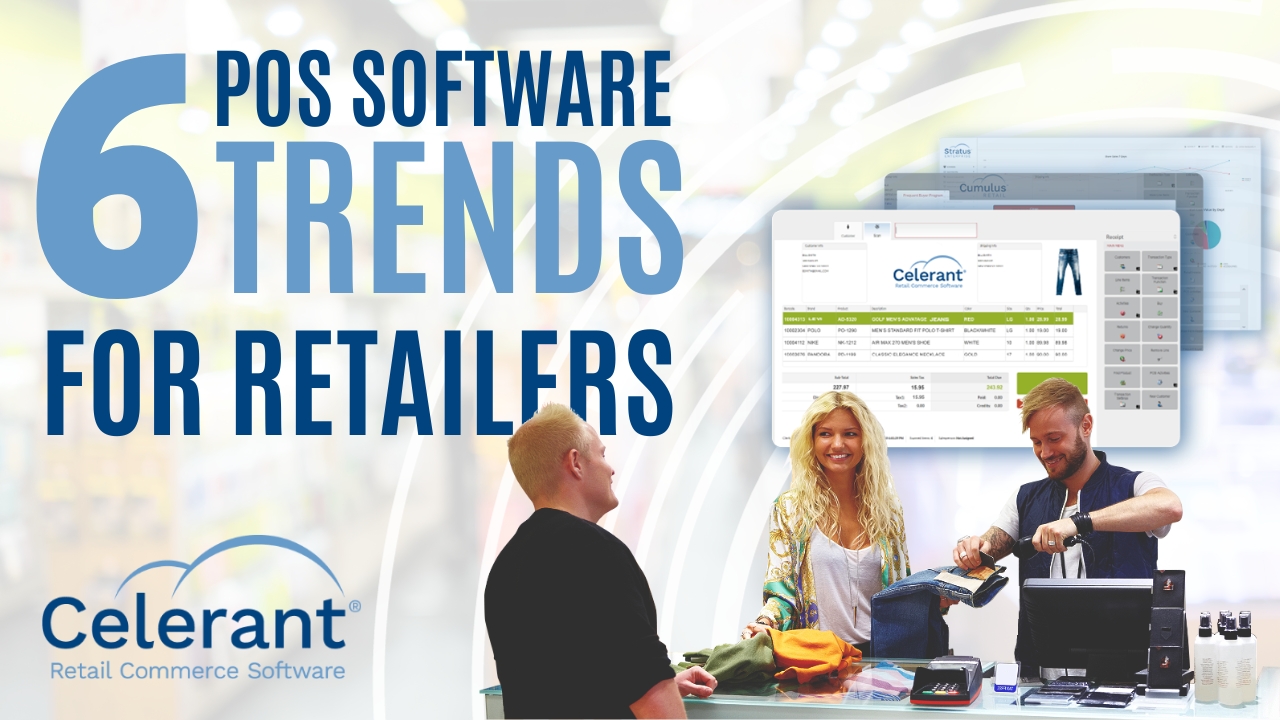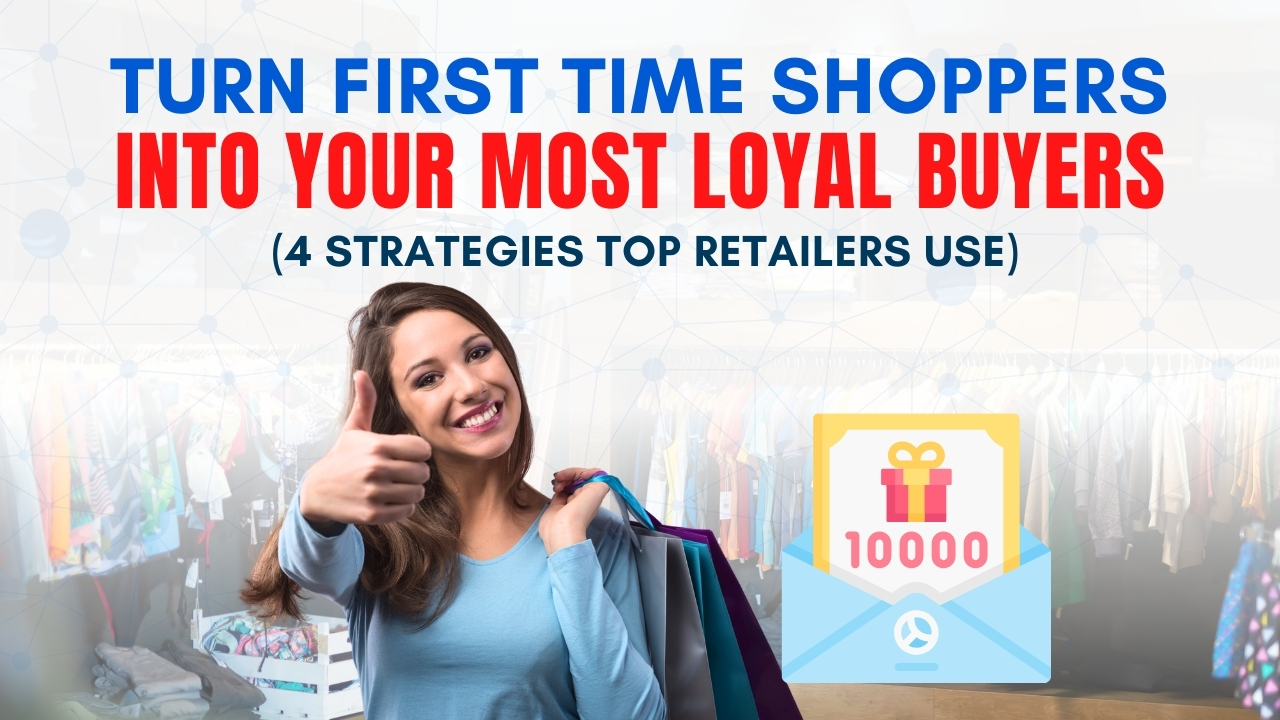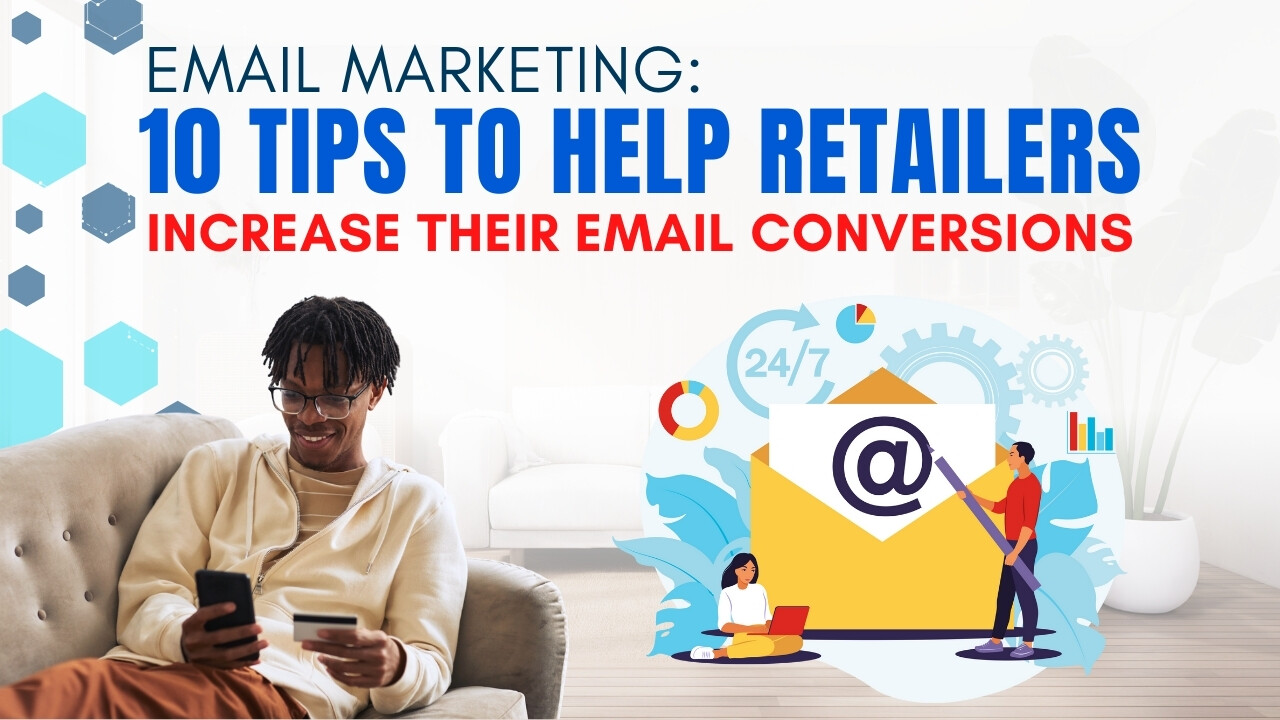Blog
6 POS Software Trends: Driving Innovation For Small Retailers
April 16, 2025/ 8 minute read/ByMichele Salerno

Blog

As the digital push leads us to redefine retail, it also pulls us away from two industry staples; cash and cash registers. Cash is slowly losing its reign as the preferred payment method as 73 percent of respondents of a Mastercard survey saying they use less cash today than they did ten years ago.
Large tech companies like Apple, Samsung, and Google are enabling mobile payments from smartphones and providing consumers with a more convenient way to pay, which means cash registers are no longer going to cut it.
Expect to see more and more brick-and-mortar shops adopting tablet-based POS software systems that can accept mobile payments, traditional credit card transactions, and of course, cash. According to a recent ShopKeep survey, 30 percent of small business owners desire to have more functionality than a traditional register.
More than 50 percent of all retailers have embraced cloud-based POS solutions. That’s unsurprising, since practically all tablet POS software systems are cloud-based; meaning the POS software, services, and data are provided to the user, on-demand, from the service provider’s servers. Essentially, that means the service provider does all the heavy lifting of storing and securing your data so that you don’t have to.
Network infrastructure is a significant expense that most small businesses don’t have the luxury to afford. Cloud technology and as-a-Service business models have created the perfect storm to lower the cost-barrier of entry to technology that only a few short years ago was only available to big enterprises.
With legacy POS software systems, there are significant upfront costs associated with the POS software and hardware like a touch-screen monitor, receipt printer, and cash drawer. Let’s not forget about the necessary network hardware like an industrial computer or dedicated server for your POS software system. Also, there’s the cost of value-added services such as installation and training. Before you know it, you’re already thousands of dollars in the hole, and you haven’t even processed a transaction yet.
Through the power of cloud-based solutions like tablet POS software systems, the Software-as-a-Service (SaaS) business model has dramatically reduced the cost of point of sale ownership to a fraction of what it once was. Now you can purchase a robust iPad POS software system for a fraction of the cost.
Therefore, expect to see more cloud-based business applications that are either standalone or integrate with one of your other core business solutions like your POS software system or accounting software.
Not only is technology a driver of change, but so is demand. Entrepreneurs and small business owners require quick access to data and analytics that can help them make smarter, data-driven decisions about their business. In the same ShopKeep small business survey, 50 percent of respondents identified access to reporting as a critical factor in their continued usage of their POS.
As we mentioned, the cloud and an innovative business model helped bridge the gap in the type of data that was available only for large enterprises and what small businesses now have in their arsenal today.
POS software should provide snapshots of your most important business data like sales revenue or transaction volume, but it should also drill down when those transactions are happening. What are your peak hours so you can staff accordingly?
What items are selling the most and what ones sit on the shelf for months, so you don’t tie up valuable cash flow into under performing products?
Expect to see more data. Expect that data to be readily accessible in a way that’s easy to consume so that you can spot comparisons and correlate trends into actionable tasks.
More data is the whole purpose of this next topic, artificial intelligence, or AI for short. What was once considered science fiction or scenes out of the Jetsons cartoon is slowly starting to become a reality.
AI is creating a super intelligence of machine learning that can perform tasks that typically require human intervention and intelligence such as speech recognition, language translation, sending emails, and predictive text. Artificial intelligence has played a significant role in marketing for many years. Have you ever received an email from an online retailer saying something to the effect of, “it looks like you left some items in your cart.” If so, that’s AI actively working in the background.
Expect to see more AI in business applications to help companies automate tasks and learn a customer’s journey through data and digital touchpoints.
The more a business knows about their customer, the more they can personalize their shopping experience. In a survey of 2,200 consumers, 78.6 percent said they are only likely to engage with a brand if the promotional offers are tailored to their previous interactions. Consumers don’t want a one size fits all approach when it comes to promotions. In fact, 63 percent of respondents in the same survey said they are highly annoyed by brands that continuously blast generic advertising messages.
If you want to acquire new customers and keep your current ones coming back time and time again, you need to take a hyper-personalized approach to marketing. One of the best tools to help you achieve this is artificial intelligence. Part of creating a personalized shopping experience is also building a seamless customer experience. Customers expect a consistent experience across every channel and facet of your business. A favorite buzzword you may have heard associated with this experience is omnichannel.
Let’s say a customer comes into your store to purchase a new dress but, you don’t have their size in stock. What do you do? An omnichannel retailer will place an order for the correct size on the spot while the customer is in front of them and ship it directly to the customer’s house; sans any shipping fees. Today, consumers use an average of almost six touch-points when buying an item, so it’s essential that whether they find you on social media, come across your website, or walk into your store, they have the same consistent experience across all channels.
As customers demand a more personal shopping experience, expect to see more features that track customers more closely with advanced data and reporting features to help customize their shopping experience.
 Explore four simple strategies to keep your first-time buyers coming back (with a little help from your… |
 How can retailers improve their email marketing metrics to achieve higher open rates, click through… |